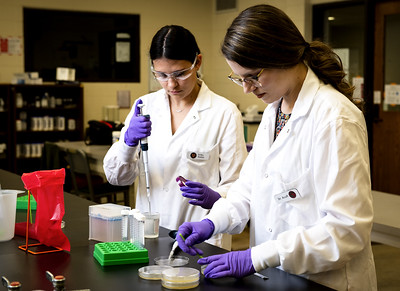According to the Bureau of Labor Statistics, the US unemployment rate for May 2022 was 3.6%. Michigan’s unemployment rate for April 2022 was 4.6%. Despite uncertainty about rising inflation and interest rates, US employers are hiring. One area of high demand is agriculture.
While the US agriculture industry has an undeniable connection to rural America, a lot of work in agriculture takes place in urban areas. First and foremost, agriculture is a business, which relies heavily on research and development; data analysis; engineering and computer science. In short, STEM fields form the basis of most agriculture industry work.
In Michigan, 75% of the population resides in just 6.5% of the state’s land. The other 25% of the population are scattered among 93.5% of the state. While most land in Michigan is agricultural, people with the educational background the agriculture companies require congregate in urban areas.
It may surprise you to know that not all ag jobs require four-year (or better) degrees. For example, Corteva Agriscience has about 500 job openings right now, about 40% of which do not require a bachelor’s or more advanced degree. If the name Corteva Agriscience doesn’t ring a bell, it’s the latest evolution of Dow/DuPont/Pioneer. And yes, Corteva Agriscience has job openings in Michigan. As part of its recruiting efforts, the company is seeking out employees with non-traditional education and experiential backgrounds.
This is an opportunity for community colleges to create an employment pipeline to good technical jobs in an industry where the demand for workers exceeds the number of qualified applicants. Creating this pipeline requires forgoing the short-term “workforce development” approach and focusing on more conventional STEM-based education. After all, it’s the workers’ educational background the agriculture industry employers value.
Agriculture jobs are going unfilled
The hyperfocus on short-term training for positions with specific employers has significantly damaged the community college brand. While this approach may put workers in jobs quickly, it also commits them to low-wage work with little prospect for advancement and a high probability of job loss when economic conditions shift.
As a result, there is minimal earnings differential between workers with high school diplomas and those with associate degrees. This doesn’t serve the interest of employers who are looking for workers with more specific educational credentials. It also doesn’t serve the interests of employees who get routed into low-wage jobs.
There is no percentage in catering to low-wage employers whose primary motivation is minimizing labor costs. Those employers who do not want to pay realistic wages should train their own workers. Period. As a matter of public policy, community colleges should commit their resources to creating the most economically rewarding employment opportunities.
Photo Credit: Arkansas Agricultural Experiment Station , via Flickr















